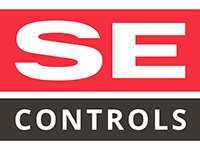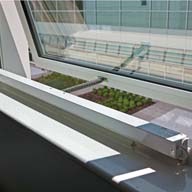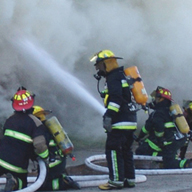In this final article looking at smoke control and fire safety in buildings from a contractors’ perspective, Will Perkins, Group Managing Director, of smoke and natural ventilation specialist, SE Controls, explores maintenance and contractors’ obligations within codes of practice and regulations.
It’s difficult to find a direct comparison for the specialised maintenance requirements demanded by fire safety and smoke control equipment in buildings in any industry other than space travel. In most situations, such as cars, computers and manufacturing machinery, for example, maintenance takes place as part of the operational process.
This means that the machine or device runs for a period of time before scheduled maintenance takes place. Occasionally, a fault may develop, which will then be corrected as a specific task within the maintenance schedule.
Within fire and smoke ventilation systems, however, the requirement is that even though the system might never be called upon to operate, it must be capable of functioning perfectly at all times due to its ‘life-safety’ critical nature.
While the design of such systems is covered by a comprehensive array of legislation, regulations and codes of practice, including Approved Document B of the Building Regulations, BS9999 and BS9991, plus European specifications for product manufacturing and operation, maintenance is driven almost exclusively, by the scope of the Regulatory Reform (Fire Safety) Order 2005, more commonly known as RRO.
RRO came into force in 2006 and replaced more than 70 separate pieces of fire safety legislation to create a coherent enforceable standard. More importantly, it also changed the emphasis of responsibility and the role of the UK’s Fire Brigades.
Under this legislation, a building’s owners, employers and managers became solely responsible for the provision of effective and compliant fire safety solutions within their premises. Also, it made the Fire Brigades responsible for the enforcement of compliance rather than providing fire safety assistance and issuing a certificate, which used to be the case.
So, if a building’s owners and management are responsible for the fire safety systems and providing a duty of care to the occupants, then it follows that maintenance must be an essential consideration to ensure that the systems perform perfectly, should the need arise.
As if to reinforce this point, the RRO also stipulates that all Fire Safety equipment must be maintained in efficient working order as maintenance records may be called upon for both legal and insurance purposes if a fire should occur.
The ‘fail-safe’ nature of fire safety, smoke ventilation and other means of escape assistance solutions requires that any maintenance work should be carried out by competent personnel to the required standards to maintain compliance with the appropriate legislation and regulations. The FIRAS Installer Certification Scheme (ICS) operated by Warrington Certification, provides an industry recognised installation, commissioning and maintenance standard that is assessed not only on quality of workmanship, but on a range of other factors including competences of site based personnel and the office based management systems.
Failure to comply with any requirement under the RRO or the specific corrective measures contained within any RRO compliance notice issued by the enforcing authority is an offence and likely to result in prosecution together with a fine or even a custodial sentence.
A number of recent incidents have served to underline this point, with one of the most visible being the Salamanca Tower fire in Lambeth in July last year. In incidents such as this, the investigation looks at a range of factors including the management regime, the original designs, suitability of equipment and the installation itself, as well as the effectiveness and frequency of maintenance.
Importantly, design responsibility sits with everyone (including installers) who has been directly involved in the decision process – ranging from product selection criteria, cable choice and routing, all the way through to testing and commissioning.
While the requirement for ongoing maintenance under the RRO can provide a source of business opportunities for contractors and equipment installers, with it comes a significant amount of responsibility. Smoke ventilation, control and fire safety systems are sophisticated pieces of equipment, which is why specialist maintenance companies can now be found that dedicate themselves solely to this type of business as they can stay up to date with legislation and best practice.
Under Building Regulation 38, the person carrying out the installation and commissioning of the smoke control system must give sufficient information to the person responsible for the operation and maintenance of the building. This information may require a level of knowledge and understanding to ensure the smoke control system is maintained in a safe manner. Ignorance and failure to document maintenance procedures would be no defence if the system were to operate detrimentally to the fire safety strategy.
Ultimately, without maintenance, the fire safety and smoke control solutions becomes non-compliant and even the most sophisticated means of escape support can be rendered useless, if it is not maintained according to the equipment manufacturers’ recommendations.
As installers and contractors, this is a tremendous responsibility, which is why maintenance must always be regarded as an essential component in any fire safety system
View Smoke ventilation Product Entry





